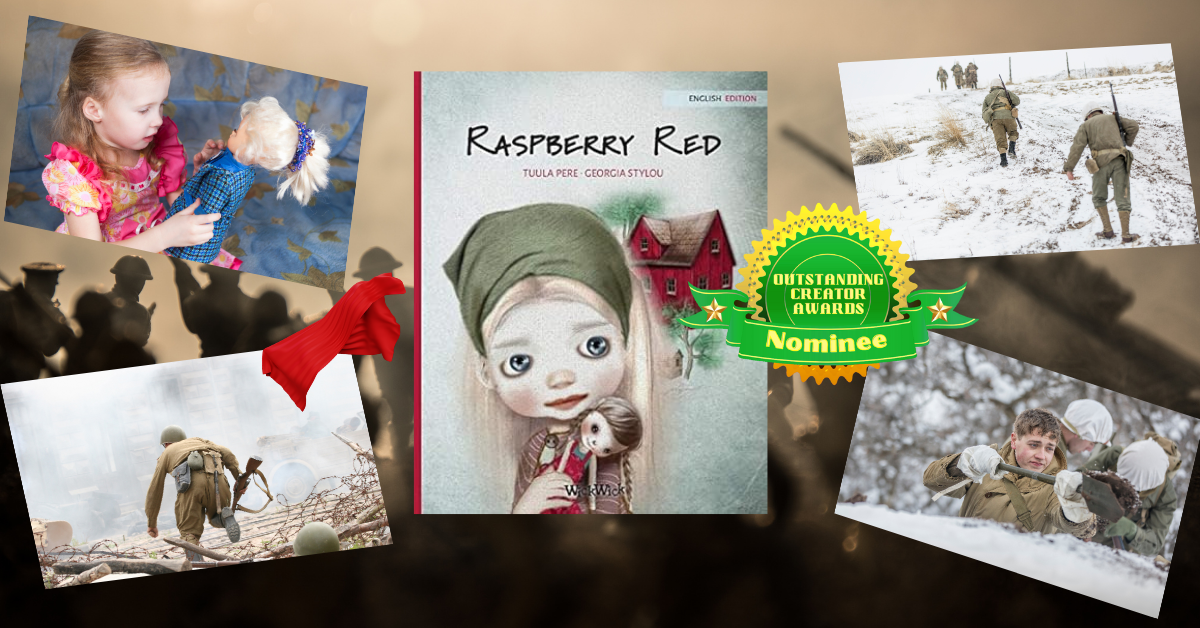|
Score: 92/100 (9.2 out of 10)
Raspberry Red joins Tuula Pere's phenomenal line of anti-war children's literature that includes former award-winning books Mother's Bread Dough and Between the Walls. Ironically, it also fits right in with the plot of the Pere book that we just read, Lullaby of the Valley. This book follows a little girl named Aino who lives in a town that is in the middle of an active war-zone. Aino is an innocent victim of this war over which she has no say or control. The conflict impacts where she can safely stay/live, the foods she can eat, or even the things she can keep and bring with her. Case in point: her prized red-caped doll which her grandmother crafted for her. In the climax of this book, Aino encounters two enemy soldiers. In her haste to hide and run from them, the prized red cape is torn from her doll and falls in the snow. While Aino escapes, she escapes without her doll's red cape. Fleeing the warzone and becoming a refugee, Aino doubts she'll ever get the cape, her most sentimental item, back. However, in a beautiful twist, one of the enemy soldiers who is—we can assume—empathetic to her, finds her cape and hangs it where she can find it. They even spare her playhouse (though they cause a lot of other destruction). This book has a really beautiful and powerful message about looking at the things we have in common rather than what sets us apart—humanity in the midst of a horrific situation like war. There are certain things that bring us together, like the love of a grandmother, or a child's toy. The fact that the enemy soldier recognized how valuable the cape was without having to be told is one of the most powerful moments we've experienced in literature. We'll say that we liked the illustrations (by Georgia Stylou) a little more than those in Lullaby of the Valley, mostly because they were more colorful and generally appealing. That seemed necessary since the book had to highlight the redness of the cape, which is a major plot device. However, the illustration can be off-putting at first, especially getting used to the Bratz-doll look and style of the character design. However, it kinda fits. Since this book centers around a girl and her doll, it kinda makes sense that the character herself would look like a doll. It is also a bit wordy for a children's book, but we won't hold that against it too much. What we did notice is that, because of the wordiness, the text had to be smaller, which can make it a bit hard to see. However, this isn't as extreme a case as we've seen before. We really liked the presentation and message of this book. Check it out on Amazon!
0 Comments
Leave a Reply. |
Archives
July 2024
Categories |

 RSS Feed
RSS Feed